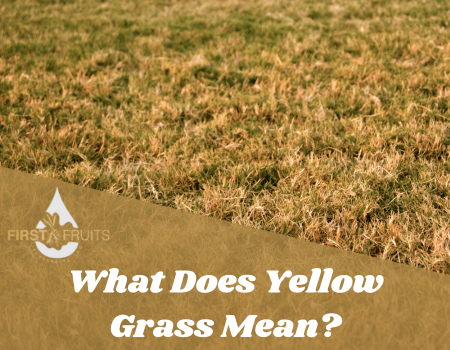Yellow grass can easily decrease your curb appeal and cause quite the eyesore both within your yard as well as your neighborhood. It’s no secret that most homeowners strive for a lush green lawn, however, for those who are facing yellow patches of grass, they may be left wondering what they’re doing wrong and how to achieve that thick carpet like green grass.
There are a few different things that can contribute to your grass turning yellow. The key is to figure out what the problem is and how to fix it. In most cases, yellow grass is a sign of low nutrition, which can be caused from multiple different things such as inadequate watering, overwatering, blunt cutting blades on your lawn mower, or even lawn diseases.
Identifying the Cause of Your Yellow Grass
Inadequate Watering
Not watering your lawn properly is one of the most common causes for your lawn to turn yellow. While most people believe that yellow grass is caused from watering too much, it can also be caused by too little water. When it comes to watering your lawn, you want to make sure you are watering your lawn deeply, but not frequently. This will help encourage your roots to grow deeper into the soil, which will make your grass more resilient to drought conditions and better at absorbing nutrients from deeper within the soil.
- Overwatering – Watering your lawn too much can cause yellow grass patches or in extreme cases, can cause your whole lawn to start to turn yellow. By over watering your grass you will notice you have waterlogged soil which can then suffocate the roots and deprive your grass from oxygen. In addition, you may notice fungi growth and other lawn diseases due to the overwatering that can then further harm your grass.
- Under Watering – Just like any plant, grass also needs a consistent supply of water to stay healthy. If your grass is not receiving enough water, it may start to turn yellow and eventually brown as it dies. When your grass hasn’t received ample water, the soil will begin to dry out thus, the roots cannot absorb the necessary nutrients to feed the grass above.
Lack of Nutrients
When it comes to growing fruits or vegetables, you’ve probably heard that the plants need to be fertilized or “fed.” Unfortunately, many people don’t always associate grass with needing fertilizer and because of this, your grass may start to turn yellow as it is lacking many of the nutrients needed to thrive and grow. Nitrogen is one of the most important things that your grass needs in order to maintain its green color, and when nitrogen levels start to drop and get low, your grass will then start to become pale and show signs of yellowing. To maintain the nutrient levels in your lawn, you will want to fertilize regularly. Your fertilizer should be balanced and provide enough nitrogen, phosphorus and potassium to ensure proper nutrition and thus optimal growth and greening. If you don’t know what your soil may be lacking or unsure if it’s time to fertilize, a soil test is a great way to easily find out what nutrients your lawn may be needing.
Lawn Mowing
Maintaining sharp lawn mower blades is one of the easiest ways you can try to help keep your grass healthy. If the blades of your lawn mower are blunt or dull it tends to tear the grass rather than cutting it, which can cause damage to the plant and cause the tips of the grass to start to turn yellow, making the lawn more susceptible to different diseases. As a general rule of thumb, you should sharpen the blades on your lawn mower once a year. For those with larger lawns, you may notice that you need to sharpen the blades more frequently. Sharp blades will provide a cleaner cut to the grass, which helps it heal quickly and maintain its vibrant green color.
Lawn Disease
While there are multiple different lawn diseases that could lead to yellowing grass, one of the most common within the Pacific Northwest is fungal infections. Fungal infections are fairly common and can spread rapidly, especially within overwatered or poorly drained lawns.
Fungal infections – There are many different types of fungal infections such as dollar spot, rust, and fusarium blight, which can all lead to yellow grass or brown patches within your lawn. These diseases tend to thrive in moist conditions and can be caused by over watering your lawn as well as poor drainage and waterlogged soil.
Luckily, avoiding fungal infections is fairly easy. Mow your lawn regularly and avoid over overwatering, all of which will help improve air circulation and thus make it harder for fungal diseases to thrive. If needed, you can also find fungicide treatments which can help control fungal infections. These should only be used if absolutely necessary, as the best course of action is to first try a more natural approach, such as aerating and properly watering your lawn.
While there are many different causes to yellow grass, luckily they are fairly easy to manage and maintain once you understand the root cause and how to treat it. Ensure you are on a proper watering schedule fertilizing regularly, and keeping your lawn mower blades sharp to boost the chances of your lawn staying lush and green all year long. If you have any questions about lawn maintenance or are looking to install an irrigation system to ensure that your grass is receiving the proper amount of water each day, feel free to contact one of our landscaping professionals today.

